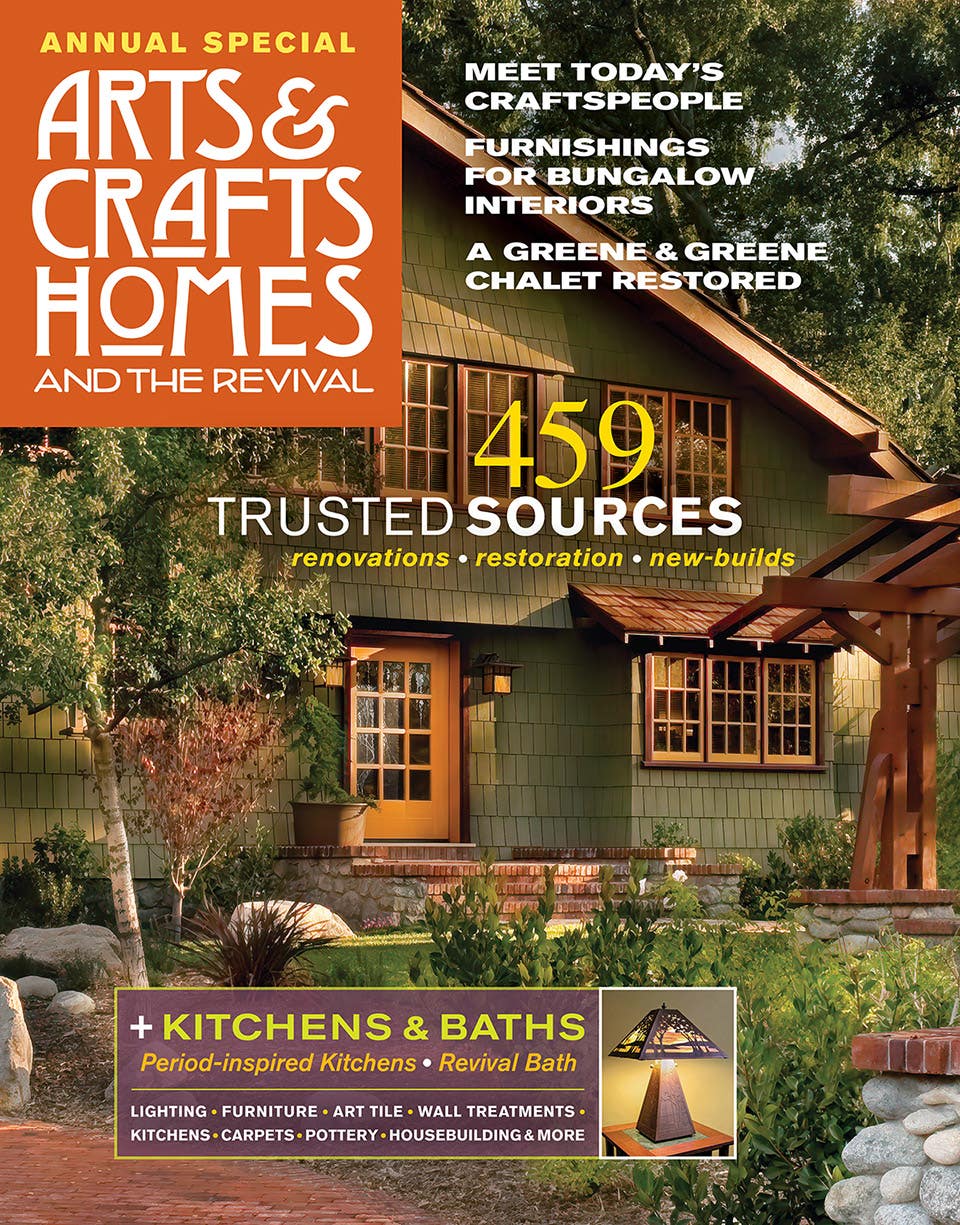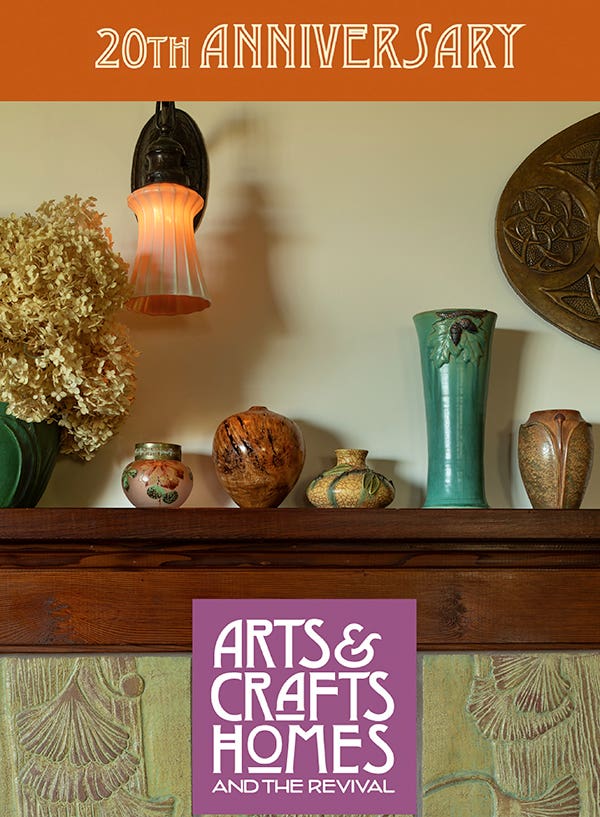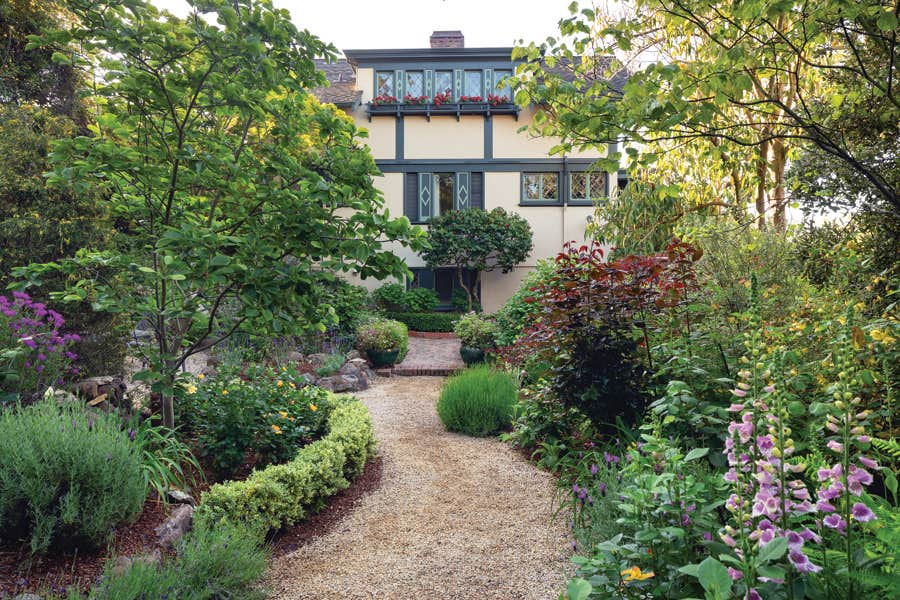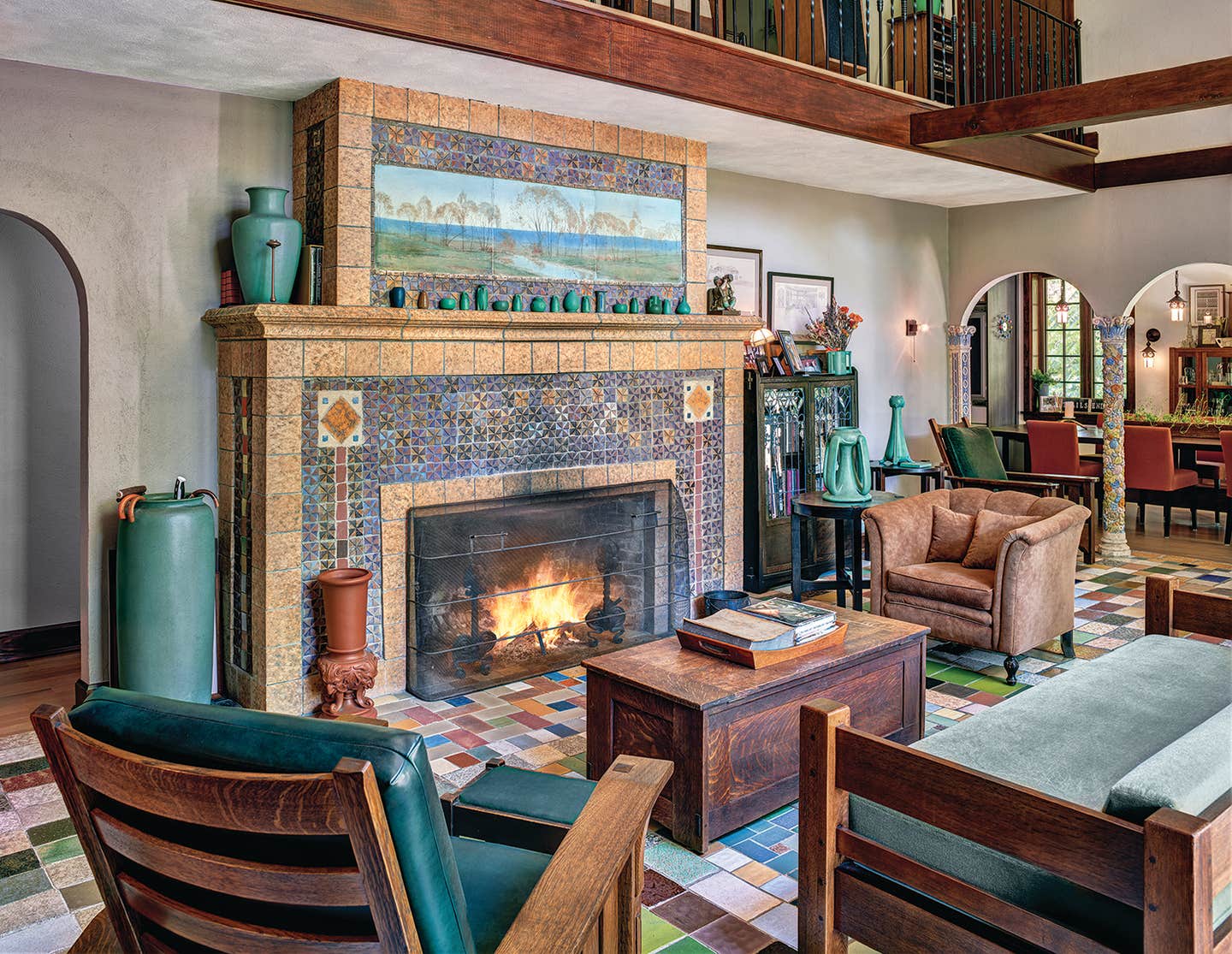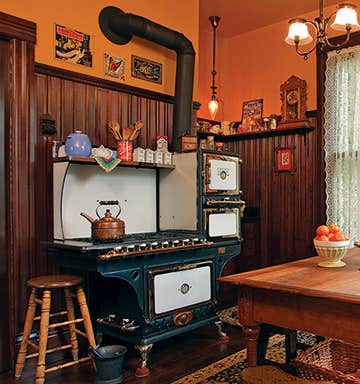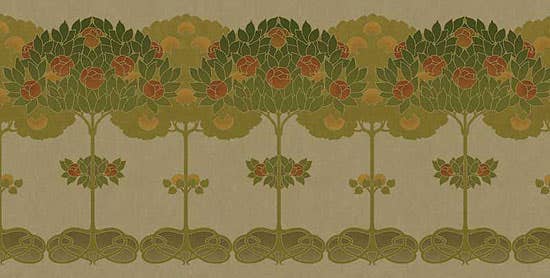Seattle Bungalow Inspired by a Visit to Roycroft
A smitten owner brings the Arts & Crafts aesthetic to a 1921 bungalow—looking past tilting porch piers and baby-blue woodwork!
“I still remember how captivated I was,” says Steve Walsh about his visit to the Roycroft Inn, in East Aurora, New York, when he was in graduate school. He remembers the simplicity, the use of wood and stone, the metal strapwork and oak trim lit by glowing lanterns. “I knew that someday I would have a home furnished like this,” says Steve.
A few decades later, Steve was in Seattle to see his brother. He noticed that picturesque bungalows are prevalent in many of the city’s older neighborhoods. It didn’t take long for him to decide to move to Seattle, where he bought a 1921 bungalow on a steep lot overlooking Lake Washington and the Cascade Mountains. He appreciated the deeply bracketed eaves and a wide, covered front porch running the length of the house.
Inside, the living and dining rooms are open with wide archways, a space perfect for entertaining. Box-beam ceilings retain their period appeal. Living space is all on one level, a plus for later retirement years.
When Steve bought the house, problems were evident. The porch piers had loose bricks and were tilting. The bathtub in the single bathroom had leaked for so long that water had seeped into the exterior wall and created significant rot. The original double-hung windows remained, but they’d been painted shut and many were missing their sash cords. A web of old knob-and-tube wiring crisscrossed the attic, and nowhere was there insulation. Most distressing, the previous owners had painted everything, including the fir woodwork, in a palette of French and baby blues—to “freshen the house” for sale.
Woodwork is celebrated in Arts & Crafts homes, and Steve knew the importance of getting it right. Thus he started with the messiest job, ridding the woodwork of blue paint. For refinishing, he chose a warm stain with red tones for the fir, remembering the gleaming paneling and trim at the Roycroft Inn.
Steve chose earthy, nature-inspired paint colors inside, most from Sherwin-Williams’ Arts & Crafts palette: Ruskin Room Green, Studio Blue Green, Hubbard Squash, and of course Roycroft Copper Red. For inspiration, Steve pored over vintage periodicals and books, including Roycroft founder Elbert Hubbard’s magazine The Fra. He combed antiques fairs and shows. The rooms filled with hand-hammered copper and brass lamps with glowing Handel and Quezal shades, elegant Roycroft copper candlesticks, bowls and vases, and serene woodblock prints, by artists from William Seltzer Rice (1873–1963) to today’s Yoshiko Yamamoto. A collection of ca. 1900 orotone (gold-tone photography) views of local Mt. Rainier anchors a wall in the living room.
With Roycroft interiors in mind, Steve chose a Morris chair by Limbert, which he put next to the fireplace with a Handel floor lamp to read by. He balanced the room with a Limbert settee and an L. & J.G. Stickley paddle-arm Morris chair. Linen curtain panels and table runners by Dianne Ayres absorb sound and soften the rooms, adding to the Arts & Crafts ambiance.
More recently, Steve Walsh redid the exterior colors. The bungalow had been painted white, which rendered it nondescript. A tax assessor’s 1931 photograph showed the original treatment of gable pediments—which turned out to be there still, under the siding, and was restored.
Brian D. Coleman, M.D., is the West Coast editor for Arts & Crafts Homes and Old House Journal magazines, our foremost scout and stylist, and has authored over 20 books on home design.

